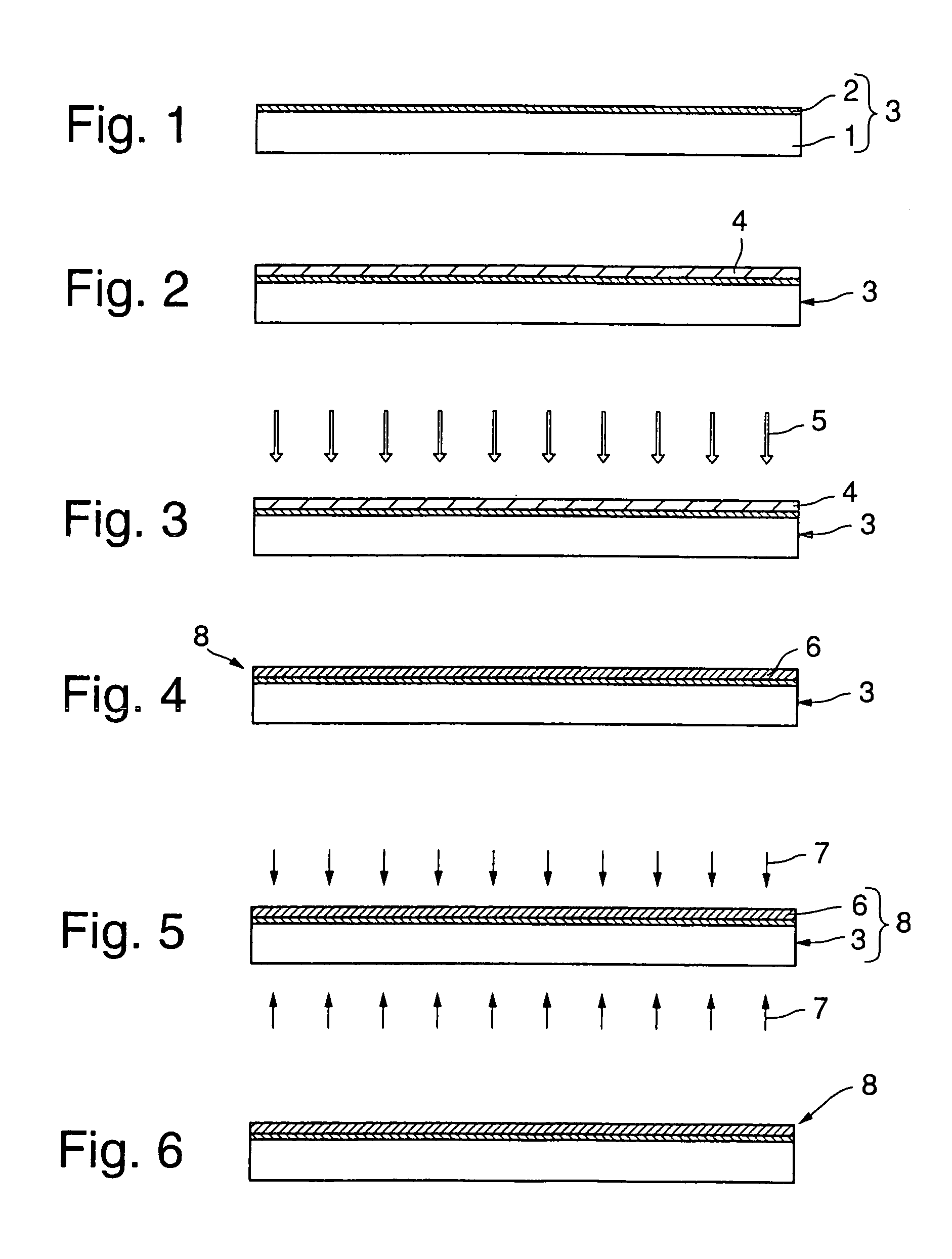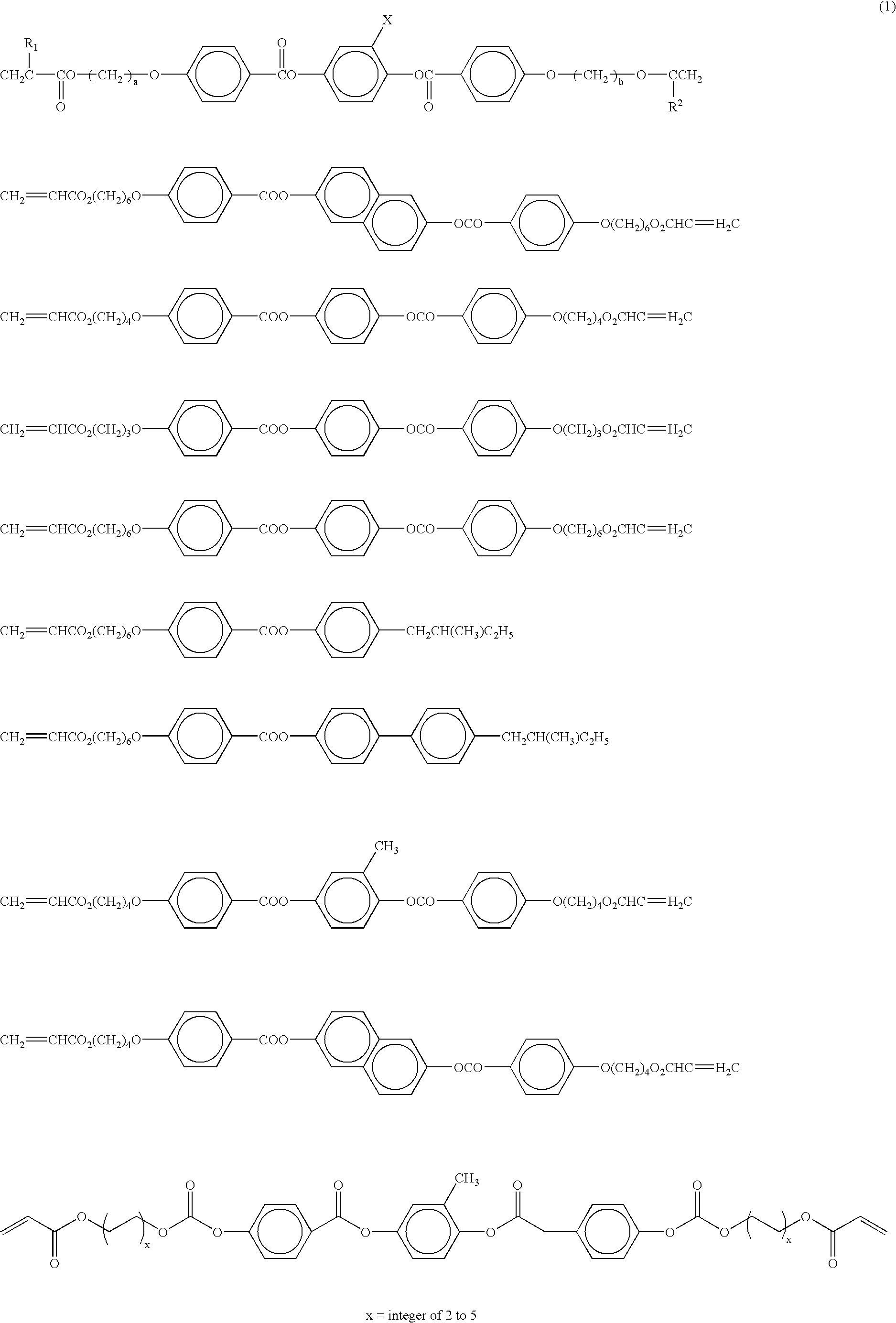Optical device
a technology of optical devices and optical polarizers, applied in the direction of mountings, polarising elements, instruments, etc., can solve the problems of uneven display or other problems, and the shift in the center reflection wavelength is disadvantageous
- Summary
- Abstract
- Description
- Claims
- Application Information
AI Technical Summary
Benefits of technology
Problems solved by technology
Method used
Image
Examples
first embodiment
(1) First Embodiment
[0048]In the first embodiment, a substrate per se has an aligning ability and constitutes the supporting substrate. Specifically, a stretched film may be mentioned as the supporting substrate in the first embodiment. When the stretched film is used, molecules of the liquid crystal material can be aligned along the direction of stretch. In this embodiment, what is required for providing a supporting substrate is only to provide a stretched film. Therefore, advantageously, this can highly simplify the step of providing a supporting substrate. The stretched film may be commercially available one. If necessary, stretched films of various materials may be formed.
[0049]Specific examples of films for stretched films include: films of polycarbonate-based polymeric materials, polyester-based polymeric materials such as polyallylate and polyethylene terephthalate, polyimide-based polymeric materials, polysulfone-based polymeric materials, polyether sulfone-based polymeric ...
second embodiment
(2) Second Embodiment
[0053]In the second embodiment, the supporting substrate having an aligning ability comprises a transparent substrate and an aligning film provided on the transparent substrate.
[0054]The second embodiment is advantageous in that the direction of aligning can be selected from a relatively wide aligning direction range by selecting the aligning film. Further, various aligning directions can be realized by selecting the type of a coating liquid, for aligning film formation, to be coated onto the transparent substrate, and more effective aligning can be realized.
[0055]Aligning films commonly used, for example, in liquid crystal displays can be suitably used as the aligning film in this embodiment. In general, a polyimide-based or polyvinyl alcohol-based aligning film subjected to rubbing treatment is suitable. Photoaligning films may also be used.
[0056]The transparent substrate used in this embodiment is not particularly limited so far as the substrate is formed of ...
example 1
1% Change to Shorter Wavelength Side
Comparative Example 1
6% Change to Shorter Wavelength Side
[0163]The sample of Example 2 and the sample of Comparative Example 2 were measured for selective reflection center wavelength, were then heated at 100° C. for 60 min, and were again measured for selective reflection center wavelength. The percentage change in center wavelength was determined as described above. The results were as follows.
PUM
| Property | Measurement | Unit |
|---|---|---|
| temperature | aaaaa | aaaaa |
| temperature | aaaaa | aaaaa |
| temperature | aaaaa | aaaaa |
Abstract
Description
Claims
Application Information
 Login to View More
Login to View More - R&D
- Intellectual Property
- Life Sciences
- Materials
- Tech Scout
- Unparalleled Data Quality
- Higher Quality Content
- 60% Fewer Hallucinations
Browse by: Latest US Patents, China's latest patents, Technical Efficacy Thesaurus, Application Domain, Technology Topic, Popular Technical Reports.
© 2025 PatSnap. All rights reserved.Legal|Privacy policy|Modern Slavery Act Transparency Statement|Sitemap|About US| Contact US: help@patsnap.com



